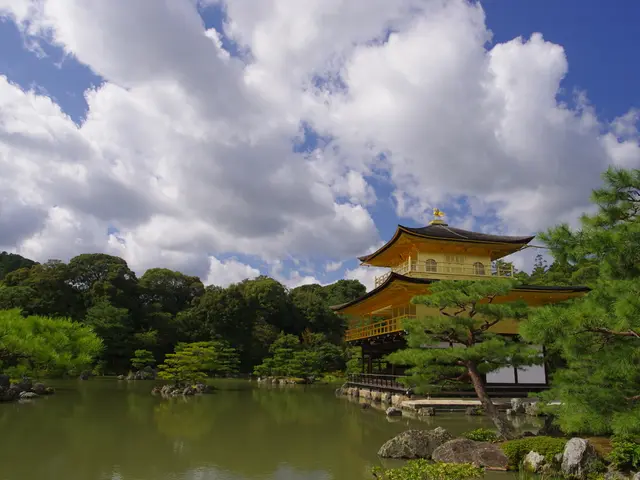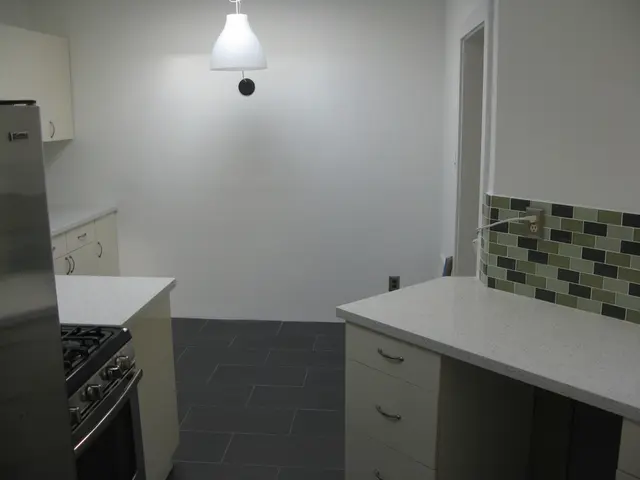Title: Slice Your Water Bills and Save the Planet with These Tech-Savvy Tips!
Water conservation benefits both the environment and your finances.
September 14, 2023
Italy, known for its picturesque landscapes, is a major water consumer, particularly in agriculture. The country uses nearly 15 million cubic meters of water annually, trailing only Spain within Europe. With summers growing hotter and drier, it's high time we embraced technology to conserve this precious resource. Throughout Italy, technology, innovation, and Agriculture 4.0 can slash water consumption in agriculture by up to 20% compared to traditional irrigation systems, according to a recent report from Cai-Consorzi Agrari d'Italia.
Take the case of drip irrigation, a water-saving wonder. Originally developed in 1860 Germany and improved in Israel using rubber and plastic, drip irrigation systems deliver water directly to plant roots, minimizing evaporation and runoff. This targeted technique ensures that each crop gets exactly what it needs, resulting in healthy growth without the waste of water or energy resources. Comprising a low-pressure tubing system and a series of emitters, these drop-by-drop watering systems consistently supply plants with the necessary hydration.
From boasting a backyard garden to large-scale farming, there's a water-saving solution for everyone. Here are some water-wise tips for your green thumb:
- Zone wisely: Different types of vegetation require varied water needs, so strategies like zoning can ensure that each area receives the appropriate amount of hydration.
- Uniform coverage: An underground irrigation system is the ideal way to guarantee even water distribution across your lawn, promoting healthy growth while conserving water.
- Fractional irrigation: Water your garden in shorter intervals with a 15-minute break between sessions, allowing water to be optimally absorbed and reducing waste.
- Pick the best times: Irrigate between 5 and 10 a.m., when the sun is low and the air is cool, to ensure minimal water loss due to evaporation and wind. Avoid watering in the middle of the day and especially at night to prevent leaves from remaining wet.
- Climate smart: Adjust your watering schedule based on seasonal and climatic changes. Equip your system with a rain sensor, an active-learning device that turns off the water when it detects rain.
- Selective watering: Utilize an underground irrigation system to avoid watering sidewalks and streets unnecessarily.
- Regular checks: Periodically inspect your irrigation system to catch any potential clogs or damaged components that may harm your green space and drive up costs.
- Roll with the breaks: To cut down on water consumption, water less frequently, only every one or two weeks. Keep an eye on what we call "spy zones" - areas of the lawn that signal the need for water first, with initial wilting and color change.
By following these eco-friendly practices, you can reduce your lawn's water requirements by as much as 40%, decreasing weekly needs from about 35 to 20 liters per square meter. This strategy results in significant savings, both economically and environmentally.
Previous Next It's time to gear up and embrace innovation in agriculture!
Contact us
Enrichment Data:
- Efficiency of Drip Irrigation: Drip irrigation delivers water directly to plant roots, minimizing evaporation and runoff, promoting healthy growth while reducing overall consumption.
- Leadership in Drip Irrigation: Companies like Rivulis and Irritec are at the forefront of drip irrigation technology, offering high-quality products, innovative solutions, and sustainable practices favored by farmers globally.
- Additional Strategies for Water Conservation: Implementing drought-tolerant crops, adopting adaptive crop rotation, and taking advantage of EU subsidies for water-saving technologies can further conserve water resources in agriculture.
- Case Studies: The Po River Basin in northern Italy has successfully implemented drip irrigation and water-saving strategies to address water scarcity and climate change, demonstrating the potential impact of technology in agricultural water conservation.
- Incorporating drip irrigation, a technology that originated from science and has been improved over time, is a means to directly save water by delivering it to plant roots and minimize evaporation, thereby aiding in environmental-science and contributing to a water-conscious lifestyle in home-and-garden settings.
- By implementing technological innovations like drip irrigation from the agriculture sector, we can significantly reduce water consumption in gardening, leading to substantial savings in both money and environmental impact, thereby aligning with the overall goal of Slice Your Water Bills and Save the Planet.







